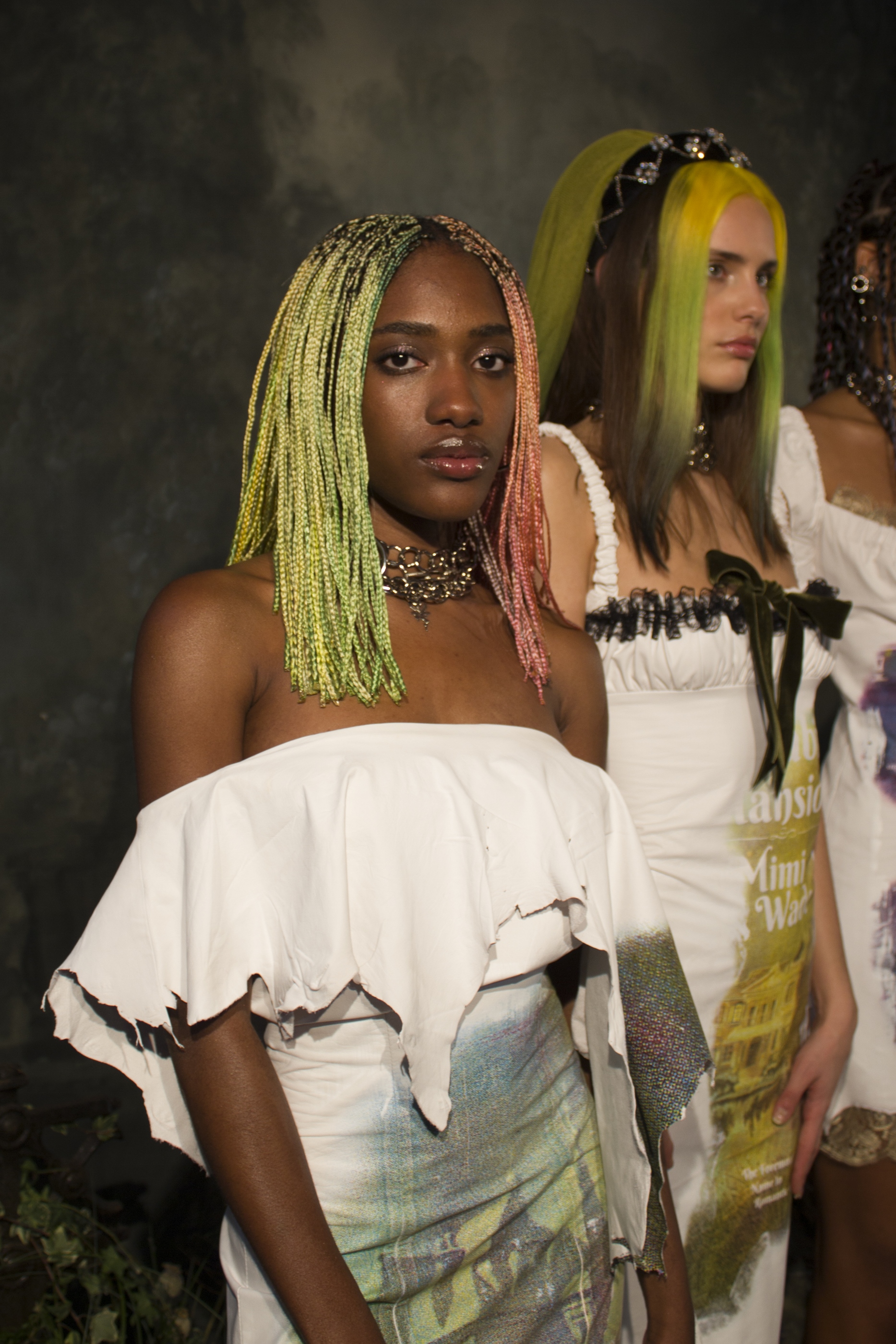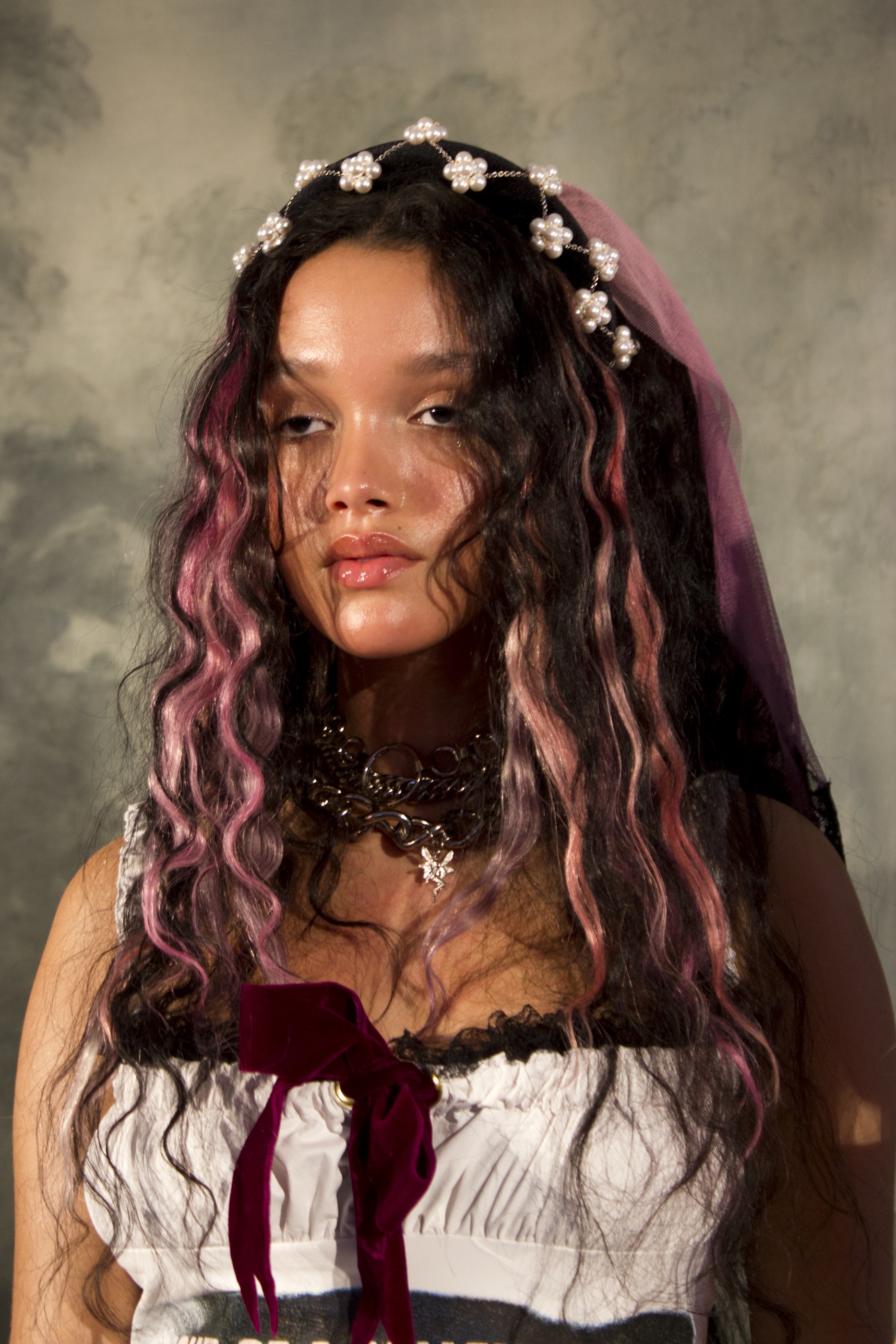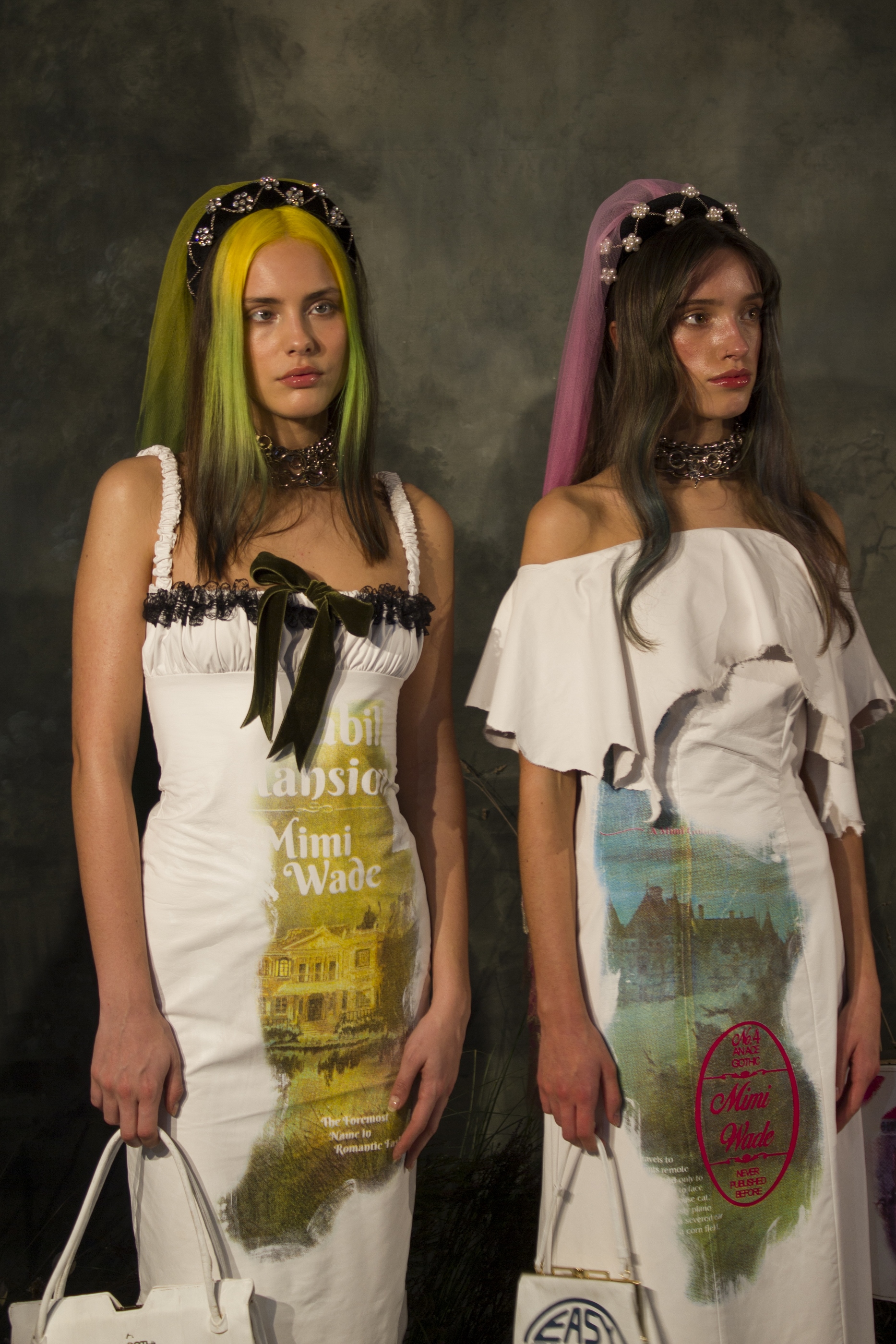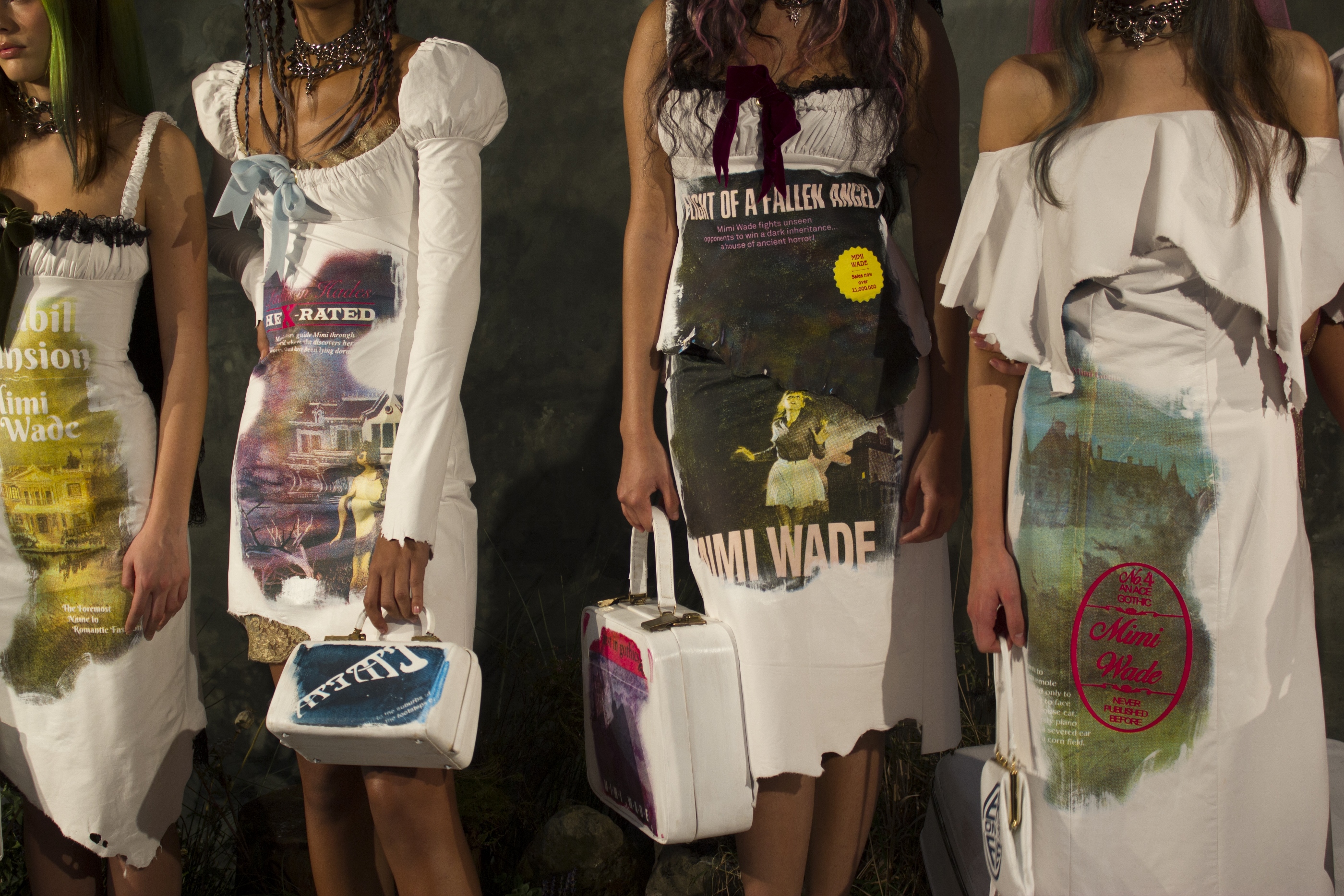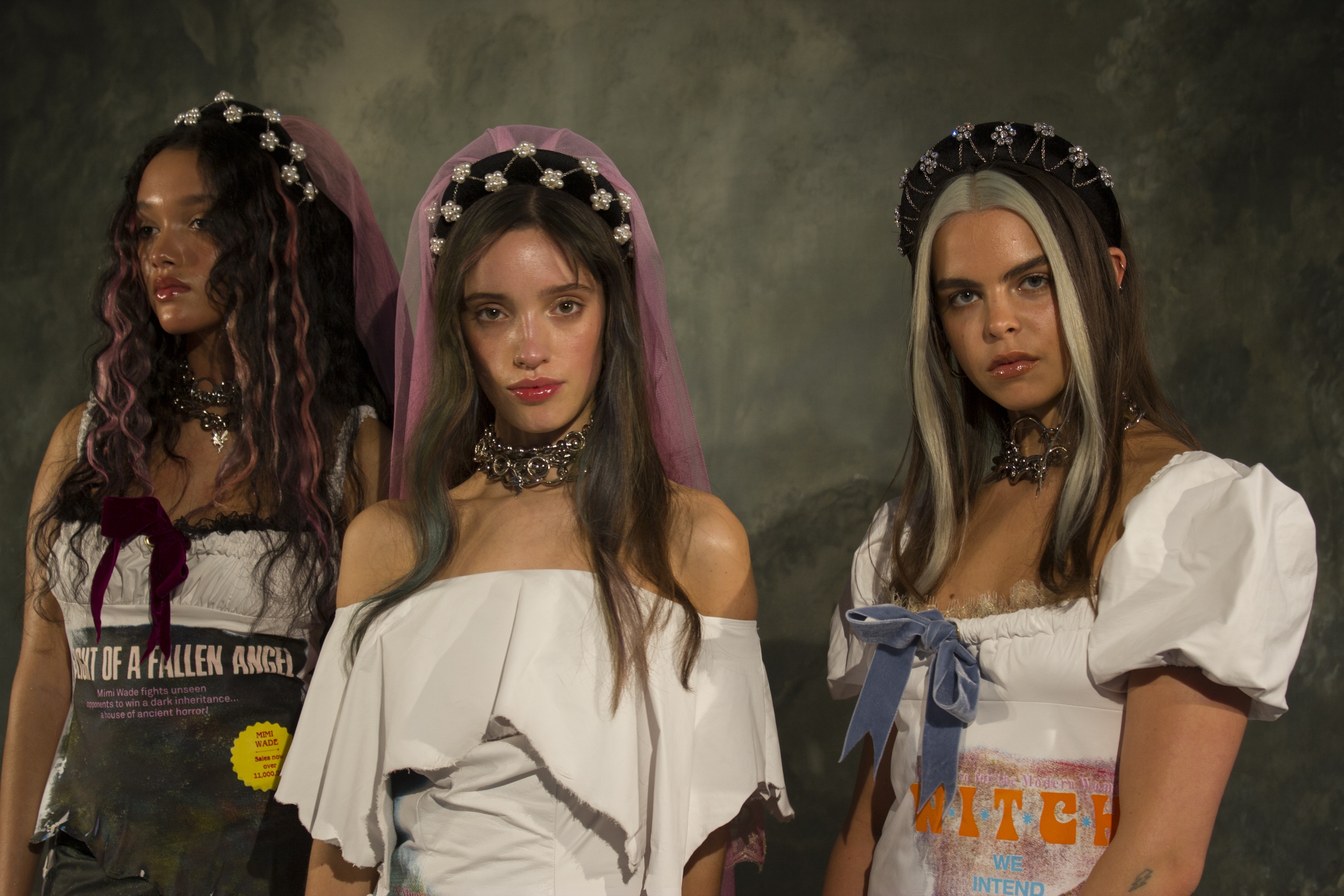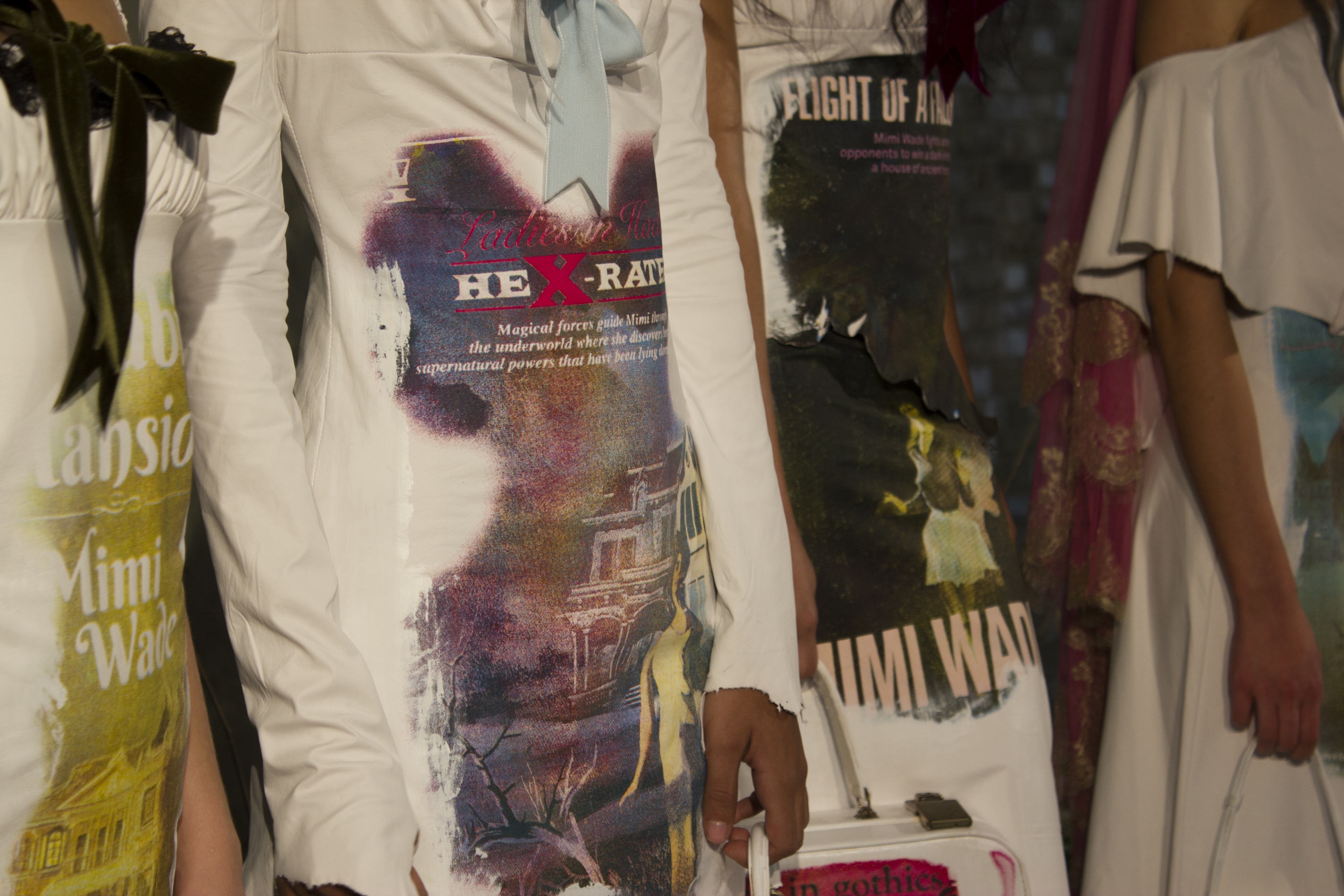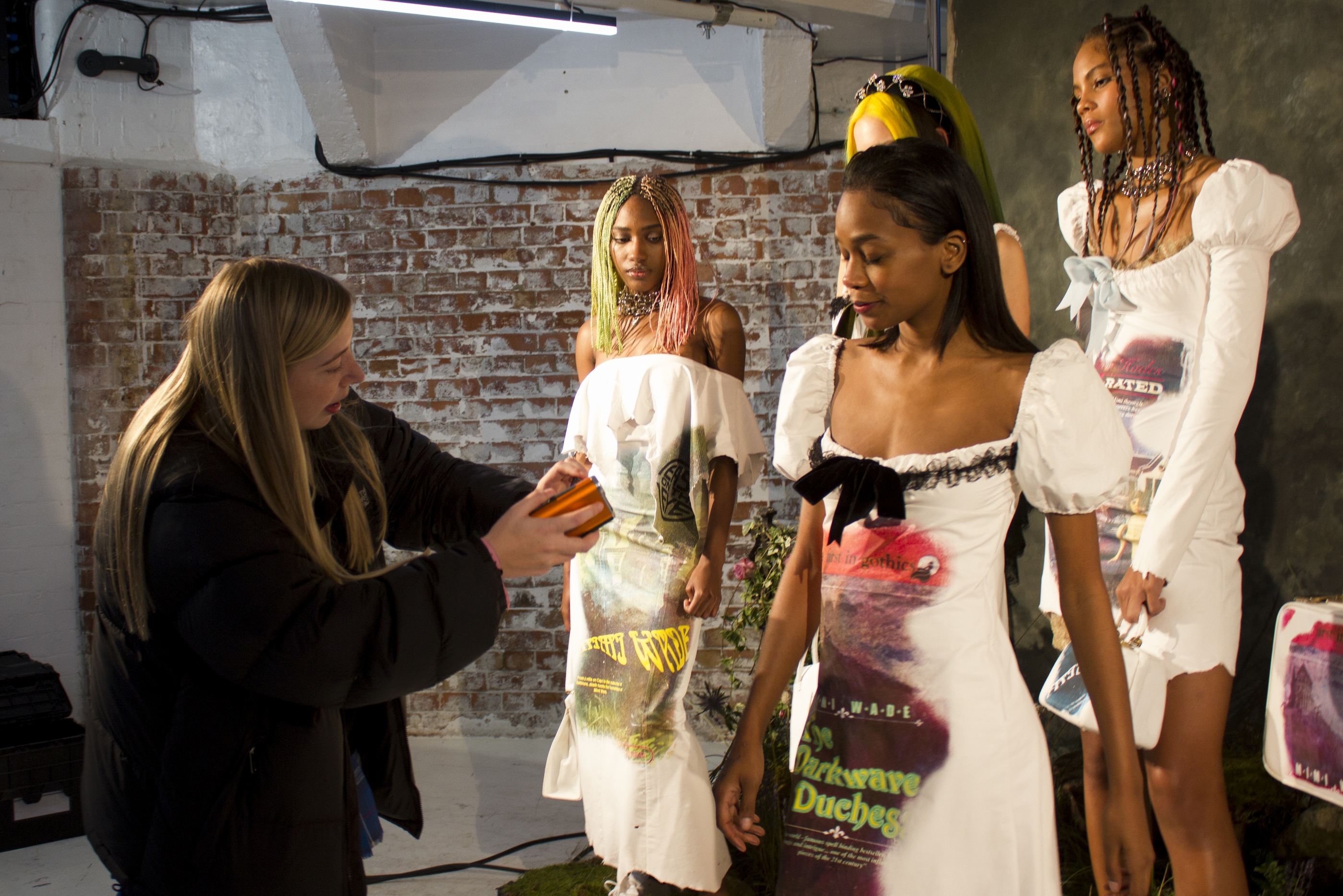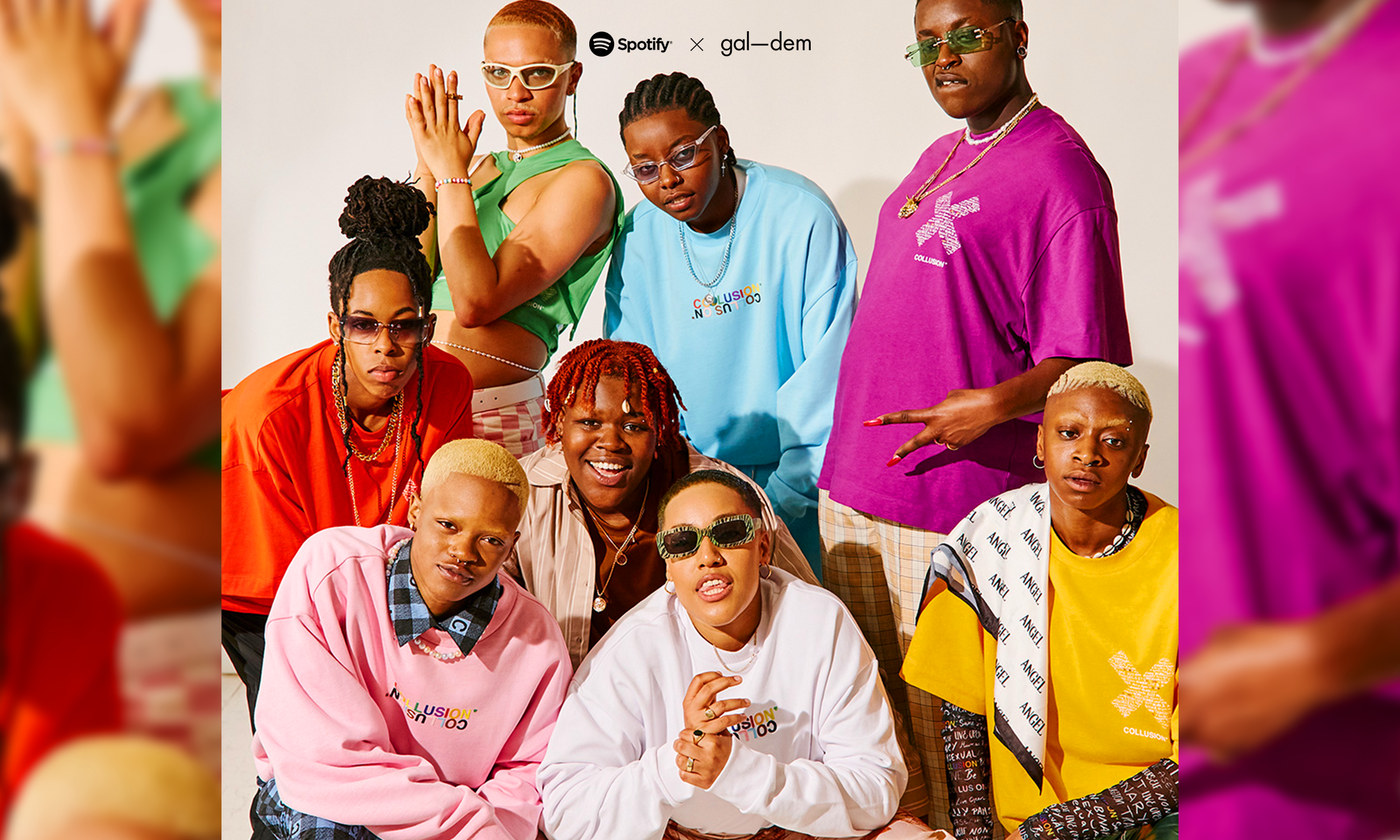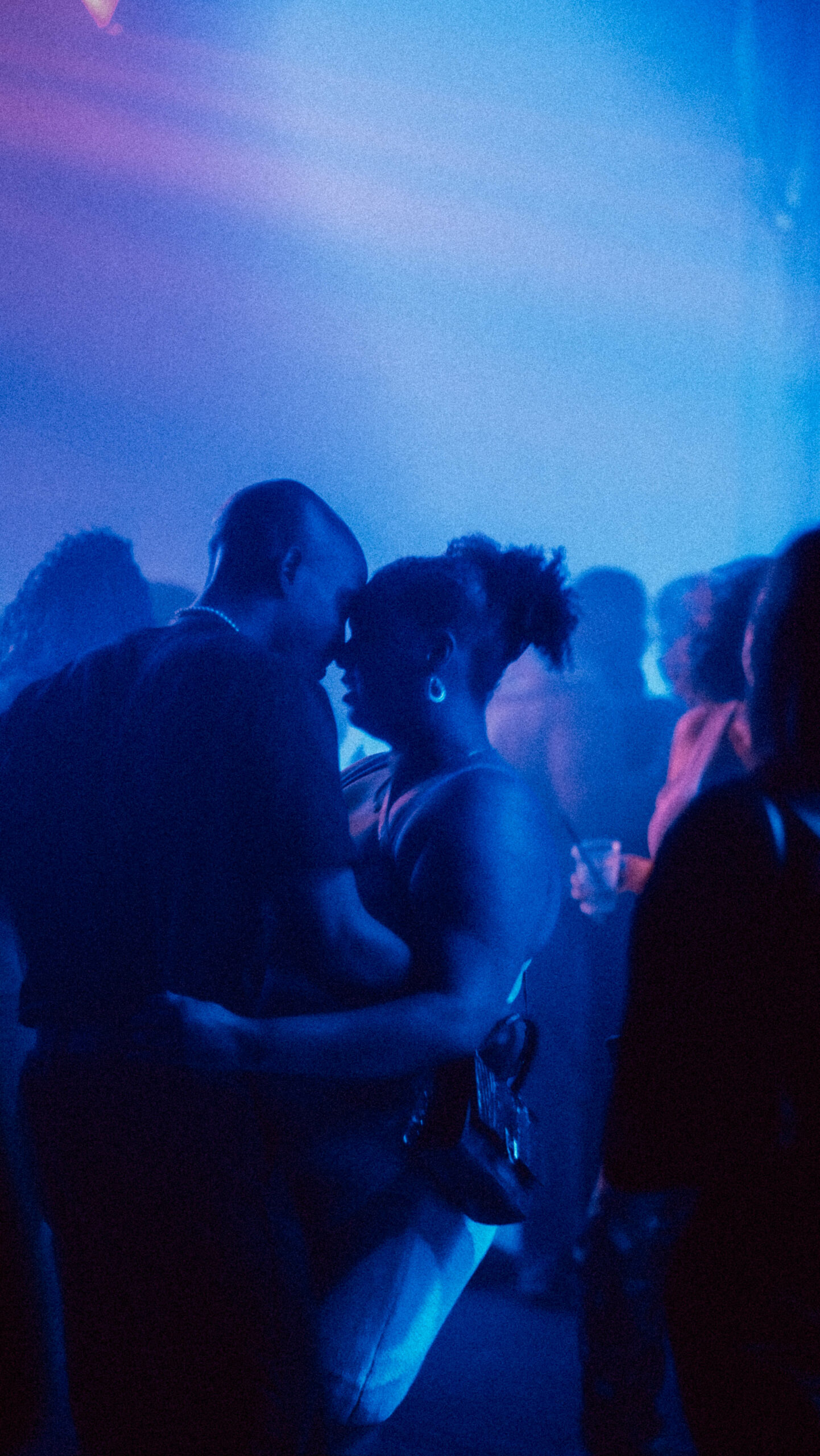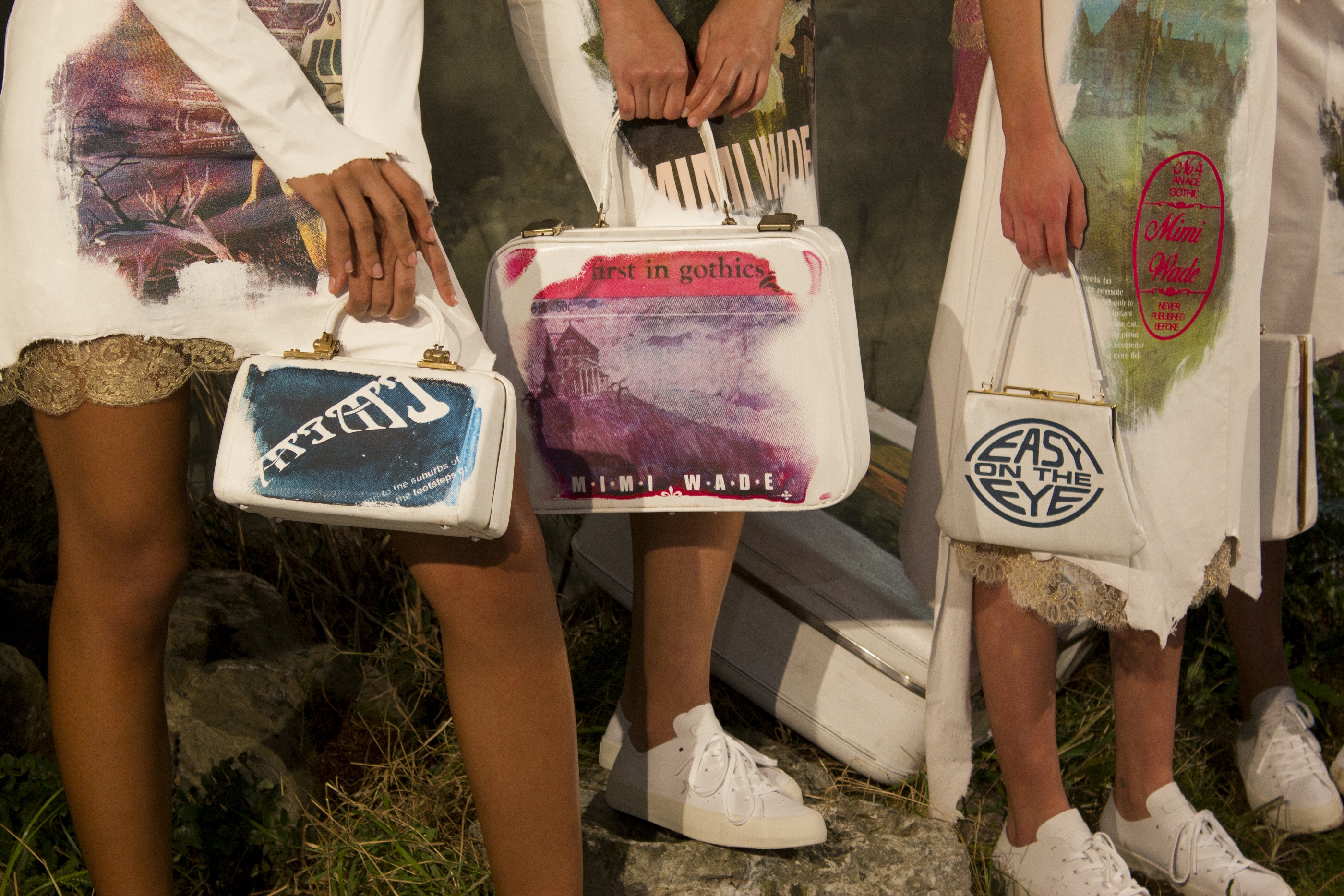
LFW: Mimi Wade’s A/W18 pop-goth delight is easy on the eye
Amber Woodward and Jade Carr-Daley
17 Feb 2018
The ultra-cool, eponymous designer Mimi Wade is known for evoking ’50s Hollywood glamour and B-movies, inspired by her ‘Granny Pammy’ who appeared in cult sci-fi-horror film The Blob.
After her 2015 graduate show for Central St Martin’s was widely lauded, Wade was selected by Lulu Kennedy to join Fashion East’s programme for nurturing fresh talent. This FW18 collection marks Wade’s first solo show away from Fashion East’s nurturing arms, and she tells me she’s bursting with nervous excitement as friends and admirers contend for her attention. She has little to be nervous about, as this collection is a confident progression from her previous work.
White bias cut dresses of exquisitely thin leather are printed with altered covers from gothic novels. The hems are raw edged and punctured with holes, as if the models have been scrambling through the rose bushes that dress the stage, while lace slips peep out at the square-cut necklines. These dresses are their own brand of spooky-sexy, drawing attention to the décolletage with soft velvet bows and metal chokers, whilst neon netted veils are held in place with thick velvet headbands embellished with pearls and crystals, giving the look a kind of ‘corpse bride’ tone.
But if you thought these damsels were the type in need of saving, you’d be wrong. The slogan ‘WITCH: We Intend to Create Havoc’ emblazons one dress, accompanied by a vintage looking purse stamped with ‘He-X-rated’. Atlanta-based R&B singer, Abra collaborated with Wade to create a unique soundtrack for the show, and her bewitching vocals and synths create a haunted house-party vibe.
When talking about her inspiration for the collection Wade refers to one of her favourite novelists, Daphne du Maurier, whose best-selling novel Rebecca was branded a ‘gothic romance’ although it wasn’t romantic at all. This categorisation, Wade notes, was purely based on her gender, and the literary establishment at the time not taking female gothic literature seriously. She tells me, “I wanted to subvert these old gothic novel prints and make them more empowering”.
This is familiar territory for Wade, having described some of her previous collections as resisting domestic oppression. In this vein, the irony of hosting this show in ‘the laundry room’ at the Converse One Star Hotel, where DJ decks sit on washing machines, is not lost.
By juxtaposing the empowered messages on graphic prints with sensual forms and fun, pop colours and texture, Wade has created a to-die-for collection that worships femininity whilst championing feminism.
- Photography by Jade Carr-Daley
- Photography by Jade Carr-Daley
- Photography by Jade Carr-Daley
- Photography by Jade Carr-Daley
- Photography by Jade Carr-Daley
- Photography by Jade Carr-Daley
- Photography by Jade Carr-Daley
- Photography by Jade Carr-Daley


